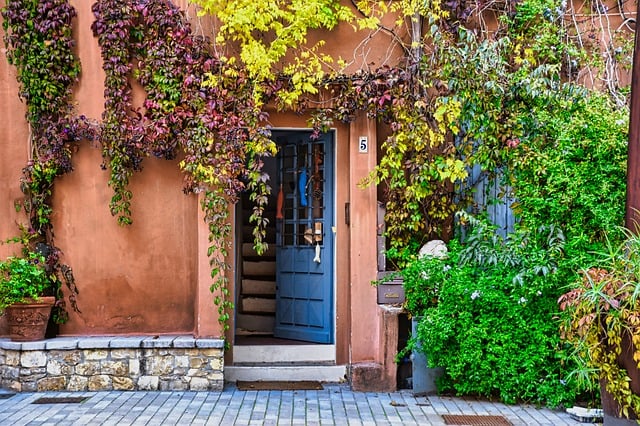House sitting is a symbiotic arrangement that offers property owners peace of mind by safeguarding their homes and belongings while they are away, through the presence of live-in house sitters who manage estates, pets, or plants. For house sitters, it's an opportunity to enjoy complimentary accommodation in diverse settings, from urban apartments to rural homes, without the long-term commitments of traditional renting. This role demands trustworthiness, adaptability, and a keen eye for detail, ensuring the home's integrity is maintained, security is upheld, and daily functions continue as usual. House sitters often form significant bonds with the properties they care for, gaining insights into stewardship and the responsibilities of home care. This arrangement can also be environmentally friendly, avoiding the costs and environmental impact of hotels, and promoting eco-conscious living. Overall, house sitting is a sustainable and cost-effective solution for temporary housing that provides mutual benefits to both homeowners and sitters within the realms of travel and home security.
Exploring the art of house sitting transforms your temporary dwelling into a home, offering a unique blend of travel and trust. This article delves into crafting customized house sitting plans that cater to various needs and lifestyles. From understanding the responsibilities and legalities to mastering communication with homeowners, we’ll guide you through the essentials for responsible and rewarding house sitting experiences. Learn the skills and qualities in demand, secure a property with tailored agreements, and navigate the global house sitting market. Discover tips for maintaining properties, managing utilities, and ensuring safety, all while respecting the unique character of each home. Whether you’re a seasoned traveler or new to the concept, this comprehensive guide covers everything from local regulations and insurance to the impact of pets and adapting to different property types. Embrace house sitting as a lifestyle choice, and learn how to document your journey, leverage social media, and even understand the tax implications involved. With insights into future trends and a step-by-step path to becoming a professional house sitter, this article is your companion for a secure, responsible, and enriching house sitting adventure.
Understanding the Essence of House Sitting

House sitting is a mutually beneficial arrangement where a house sitter temporarily resides in a homeowner’s residence in their absence, caring for the property and often pets or plants. This practice has gained popularity as an alternative to traditional pet boarding or hiring full-time property caretakers. For homeowners, it offers peace of mind, knowing their home and belongings are being looked after while they travel; for sitters, it presents an opportunity to enjoy a ‘home away from home’ experience without the long-term commitment of renting.
Understanding the essence of house sitting lies in the delicate balance between caretaking responsibilities and the illusion of continuous occupancy. A successful house sitter is one who seamlessly integrates into the daily routines of the household, maintaining the property’s security, upkeep, and comfort as if they were a permanent resident. This requires a blend of trustworthiness, adaptability, and a keen attention to detail. House sitting is not merely about pet care or plant watering; it encompasses a holistic approach to preserving the lifestyle and routines of the homeowner. It’s a unique experience that offers sitters the chance to live in different environments, from urban apartments to rural homes, each offering its own set of challenges and rewards. This immersive opportunity allows sitters to form a deep connection with the property, often leading to a profound understanding of what it means to be stewards of someone else’s home.
The Benefits of Engaging in House Sitting

Engaging in house sitting offers a multitude of benefits for both homeowners seeking peace of mind and house sitters looking for accommodation coupled with unique opportunities. For property owners, having a trusted individual reside in their home while they are away deters potential burglars, ensuring the security of their belongings and sanctuary. This lived-in presence can be a significant deterrent against theft or vandalism, providing a sense of safety that is invaluable for long-term absences. House sitters, on the other hand, gain access to temporary housing at no cost, often in desirable locations, allowing them to experience different neighborhoods and lifestyles. This symbiotic relationship not only saves homeowners money on empty property insurance but also offers sitters a chance to care for pets and gardens, which can be highly rewarding. The arrangement fosters a sense of community and responsibility, as both parties are invested in the maintenance and upkeep of the property during the sitting period. House sitting as a practice is an eco-friendly alternative to hotel stays, reducing the carbon footprint associated with traditional travel accommodations. It’s a win-win scenario that leverages the resources of those who have excess capacity with the needs of those who require temporary housing solutions.
house sitting emerges as a mutually advantageous arrangement, offering homeowners peace of mind and sitters cost-effective living solutions. By exploring the intricacies of house sitting and its various benefits, it’s clear that this practice is more than just a stopgap measure; it’s a flexible lifestyle choice with significant perks for both parties involved. For those considering this option, careful planning and open communication are key to a successful experience. With the right approach, house sitting can be tailored to suit diverse needs and preferences, ensuring a harmonious and rewarding exchange for all involved.
